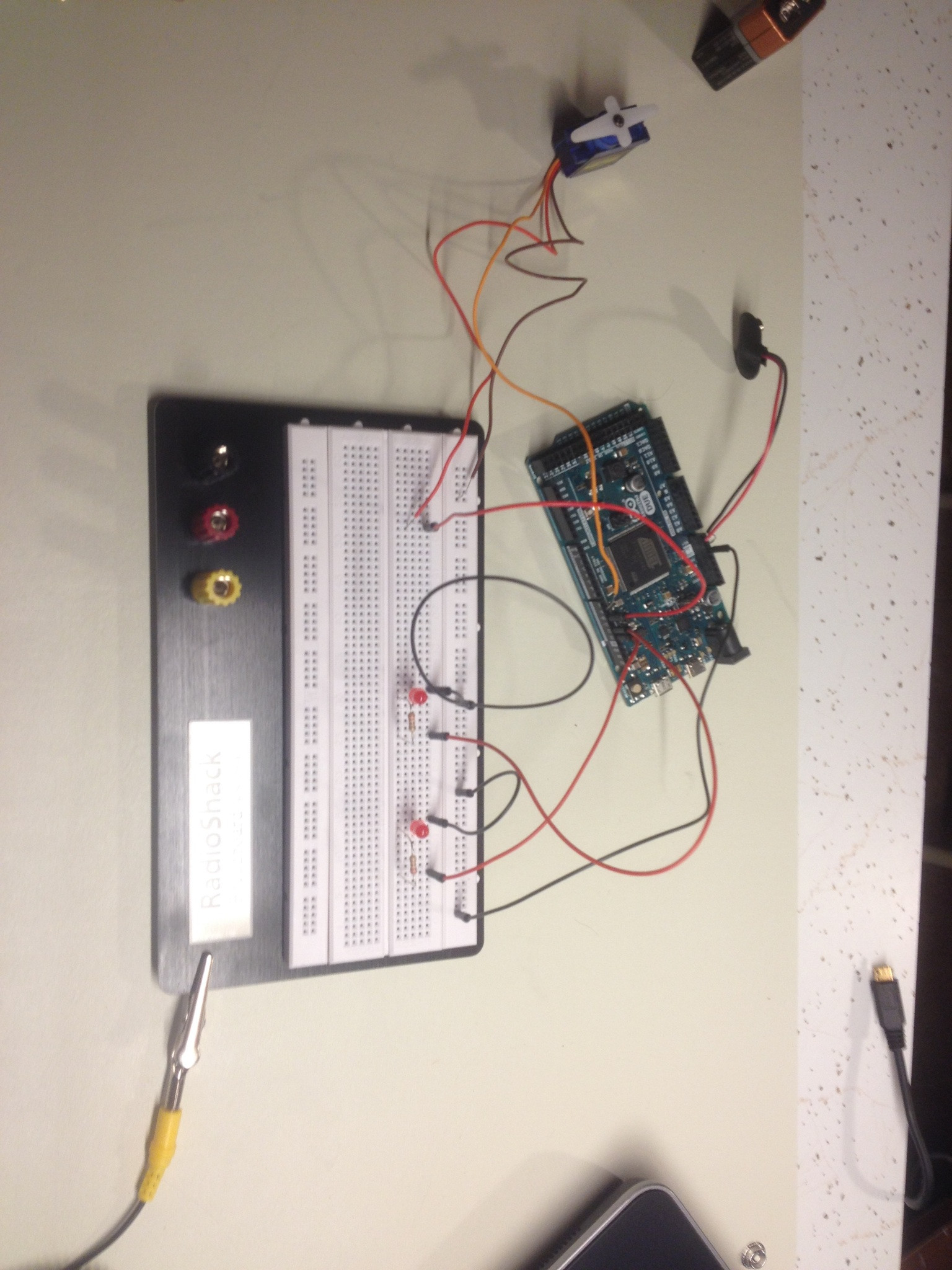I have an Arduino program that uses the Thread library to create two concurrent threads, where:
- Thread #1 blinks an LED every 500ms; and
- Thread #2 blinks another LED every 250ms
I wired things up, flashed the program to my Arduino Due, and it ran beautifully.
I am now trying to add a 3rd thread that sweeps a servo back and forth.
Here's my design:

And the schematic that Fritzing generated for me:

And an accompanying actual picture of the wire up:

If you can see it, I've rigged Pin 10 as an OUTPUT, and attached the servo's signal line to Pin 9. Here's the code:
#include <Thread.h>
#include <ThreadController.h>
#include <Servo.h>
int SERVO_SIGNAL_PIN = 9;
int SERVO_PWR_PIN = 10;
int LED_1_PIN = 12;
int LED_2_PIN = 13;
Servo servo;
int pos = 0;
static bool LED_1_STATUS = false;
static bool LED_2_STATUS = false;
Thread blinkLED1Thread = Thread();
Thread blinkLED2Thread = Thread();
Thread servoThread = Thread();
ThreadController master = ThreadController();
void setup() {
pinMode(LED_1_PIN, OUTPUT);
pinMode(LED_2_PIN, OUTPUT);
pinMode(SERVO_PWR_PIN, OUTPUT);
servo.attach(SERVO_SIGNAL_PIN);
blinkLED1Thread.onRun(blinkLED1);
blinkLED1Thread.setInterval(250);
blinkLED2Thread.onRun(blinkLED2);
blinkLED2Thread.setInterval(500);
servoThread.onRun(runServo);
master.add(&blinkLED1Thread);
master.add(&blinkLED2Thread);
master.add(&servoThread);
}
void loop() {
master.run();
}
void runServo() {
// Give the servo a few seconds to reset to the starting position.
servo.write(0);
delay(5000);
while(true) {
for(pos = 0; pos < 180; pos += 1) {
servo.write(pos);
delay(15);
}
for(pos = 180; pos >=1; pos-=1) {
servo.write(pos);
delay(15);
}
}
}
void blinkLED1() {
LED_1_STATUS = !LED_1_STATUS;
digitalWrite(LED_1_PIN, LED_1_STATUS);
}
void blinkLED2() {
LED_2_STATUS = !LED_2_STATUS;
digitalWrite(LED_2_PIN, LED_2_STATUS);
}
When I flash this to the Due, two disappointing things happen:
- The LEDs, which previously blinked at the correct rates, now stay lit and do not blink at all; and
- The servo doesn't move
Now perhaps I have a bum servo, or perhaps I haven't wired it up correctly, but the most concerning thing to me is that the LEDs are no longer blinking. I have a feeling that once I get those blinking again, the servo will probably start sweeping as well.
Can anyone spot anything that jumps out at them as being wrong here, wiring and code alike?

delay(). Do notdelay()inside a thread!delay(...)called in one "thread" would block/lock progress in other threads? Thanks again!